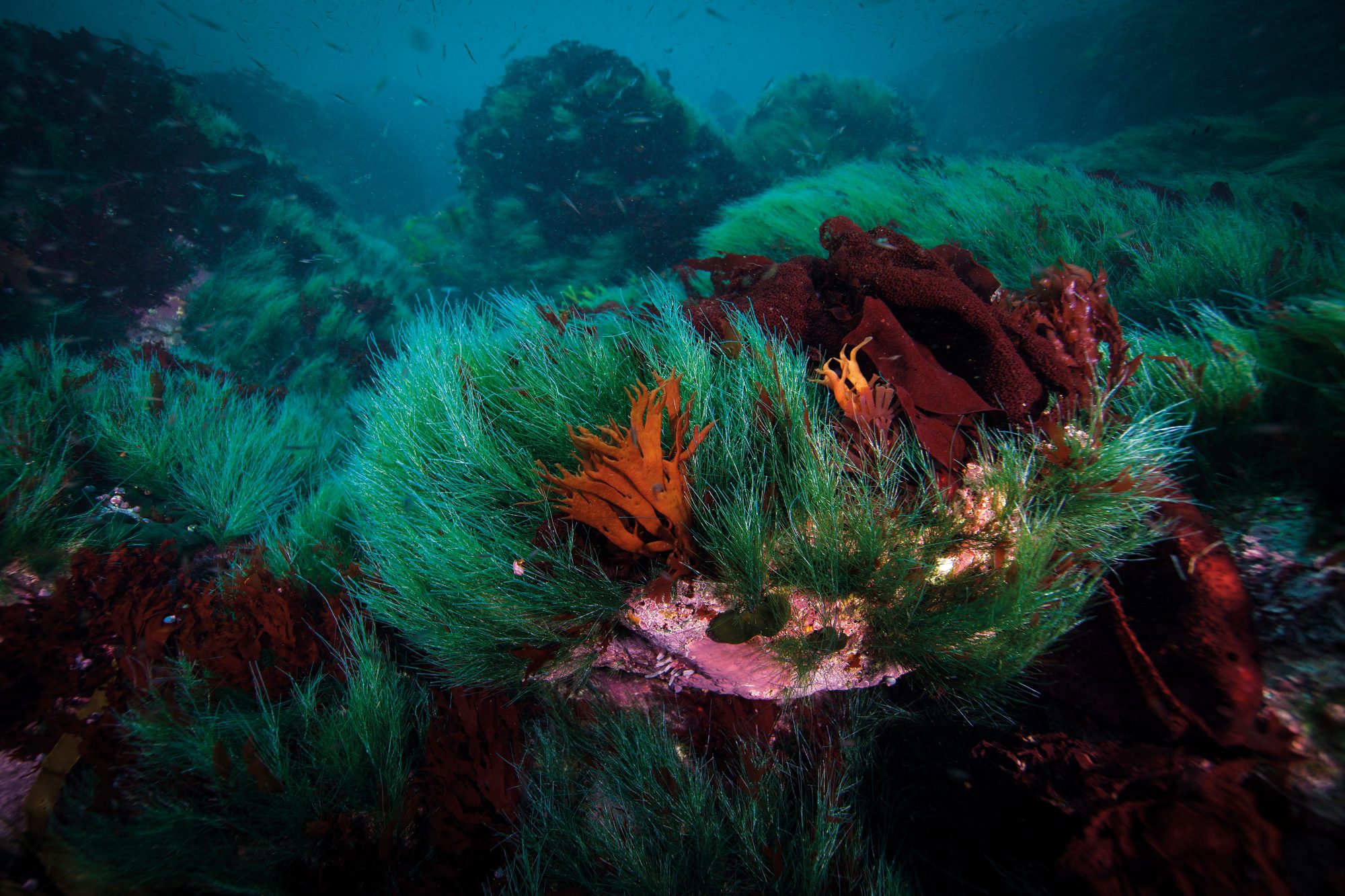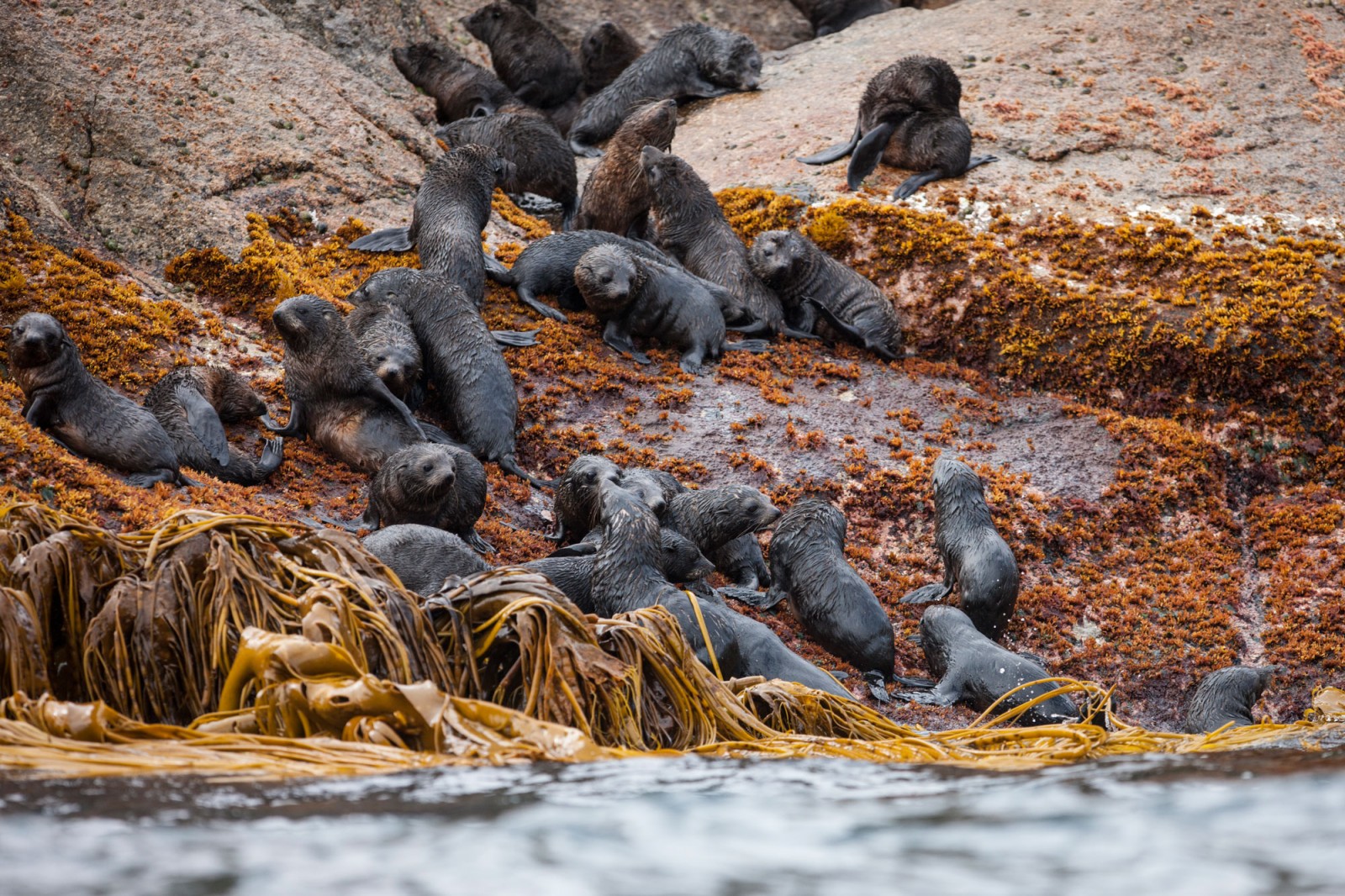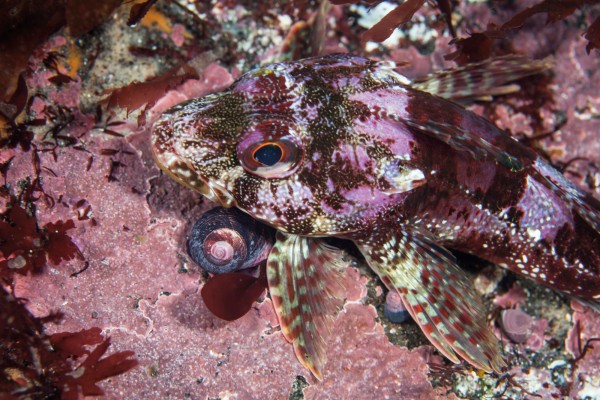
Seas of bounty
Swept by the cold seas of the Southern Ocean, New Zealand’s outposts of the Bounty and Antipodes Islands are awash with life.




He was sent on an errand to pick up some fruit, but like many of his chores in the great age of seafaring, Lieutenant William Bligh made rather heavy weather of it.
The Royal Society had demanded that breadfruit, common in Tahiti, be trialled as a crop in the distant West Indies, half a world away. It was an inconvenient assignment at best. First, Bligh attempted for a month to round the tempestuous Cape Horn, eventually turning, defeated, and setting sail to chart a course the other way round the block—from Cape Agulhas at the southern tip of Africa, deep into the southern latitudes to run before the Roaring Forties to Tasmania, then south of New Zealand, until he came upon a group of rocky islands scattered across a couple of nautical miles like a set of knuckle bones. Bligh named them the Bounty Islands, after his ship.
It may have been a hasty pronouncement, however, as in his next breath he described them as “bare and desolate, with the inability to afford any vegetable production”. But this was a man with breadfruit on his mind; he would have been better served to cast his eyes towards the truly bountiful coast, and the seas, which thrash—awash with life—upon its rocky ramparts.
It was September 19, 1788, and Bligh had no sooner discovered the Bounty Islands than he had dismissed them as but a hazard for navigation, and sailed on to Tahiti. Onward, as his enduring poor luck would have it, to a mutiny. But the Bounty Islands remained, heaving with sea life, until someone else took notice.
Sealers of the schooner Brothers landed in 1807, and claimed no fewer than 38,000 seal pelts before returning to Sydney with their cargo. Thousands more were taken until, in 1831, Captain John Biscoe visited on the Tula and counted just five, such was the scale and efficiency of the harvest.
However, the isolation of the Bounty Islands—their wide moat of ocean—would prove their greatest defence. There are few introduced animals in the archipelago (the European starling is the only imposter) and the New Zealand fur seals have rebounded, with a population of well over 20,000 today.

Perhaps only the Antipodes Islands, 165 kilometres to the south, were farther from the reach of Europeans. Indeed, they owe their name to the fact. On her last voyage home from Port Jackson, Sydney, to England, HMS Reliance was about to pass the point on Earth’s surface most geographically distant from the datum of navigation—Greenwich, London when Captain Henry Waterhouse sighted the islands and named them the Pen-antipodes, for their position.
If only they could have been further away. After sealers took some 200,000 skins in just two seasons, the seal population of the Antipodes never fully recovered.
However, the islands are some 15 times larger in area than the Bounty group, and consequently were vastly more verdant and complex terrestrial ecosystems, with vast grasslands and great crops of ‘megaherbs’. The group is also cut from a different cloth, geologically speaking. Both the Bounty and the Antipodes groups stand on the Bounty Platform, a massive volcanic promontory of the Campbell Plateau, but while the Bounty Islands are formed of granite thrust up from the seafloor, the Antipodes are the result of violent volcanic activity just 1.5 million years ago.
Here parakeets better suited to the tropics cohabit with penguins, burrowing petrels and albatrosses—a Mecca for birders. This reputation brought a veritable who’s who of the botanical and ornithological world to the Antipodes, to fossick for specimens in the undergrowth and to shoot them from the sky. The well-known ornithologist Rollo H. Beck, visiting with the American Museum of Natural History in 1926, recorded with glee in his journal that he had managed to take 51 birds before 8am, “which is the most I ever shot before breakfast”.
Today, naturalists regard these isles with greater concern. They are far from civilisation, but not far from danger. The long-liners that sweep the seas reel in an undesirable number of albatrosses, the fishing and the shifting outcomes of climate change take their toll on the declining populations of penguins, and on the island, swarms of introduced house mice attack seabird chicks in their nests.
In March this year, philanthropist Gareth Morgan announced a million-dollar eradication programme to “blitz the bloody things”. Soon after, the Minister of Conservation, Nick Smith, outlined a wider plan to extend the public–private partnership model to Auckland Island, 900 kilometres to the west. It’s hard to resist the notion that the 19th- and 20th-century culture of exploitation has been reversed. From the antipodes of the old Empire, a new ideal is somehow flowing backwards, toward civilisation, restoring former bounty one island at a time.
















